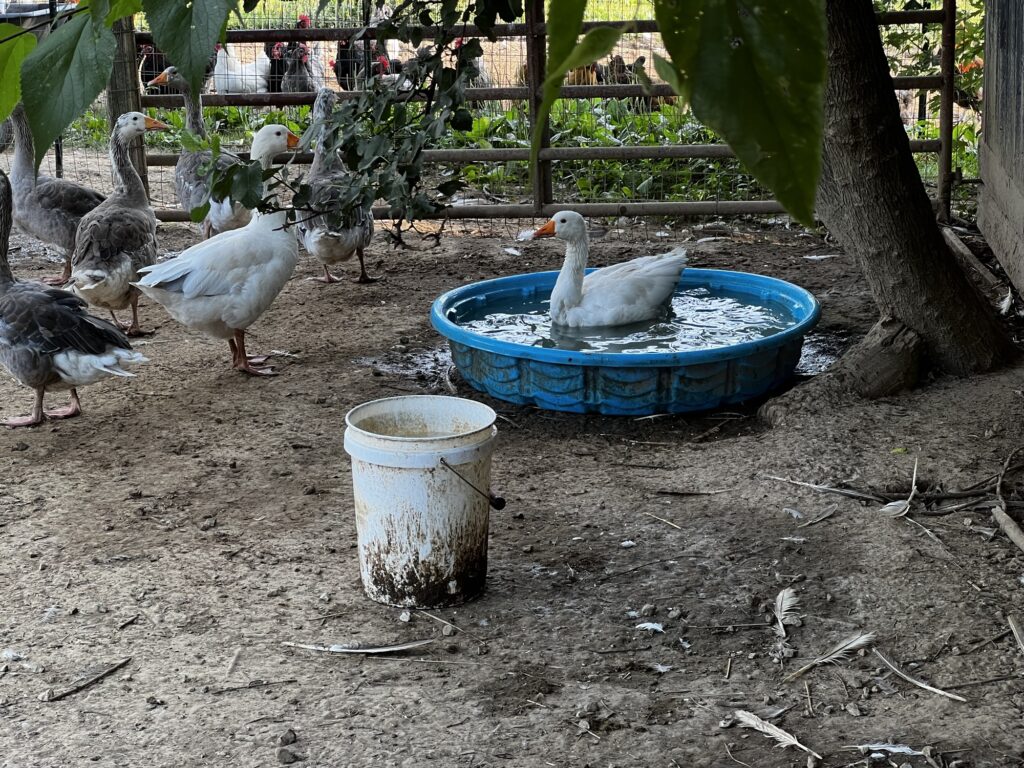
One morning, as I filled one of several five gallon buckets for the geese, I noticed a sunflower seed spinning around and around in the eddy created by the water. We feed black oil sunflower seeds as treats to the poultry, so seeing one in a bucket is not usually cause for alarm. Until you realize that it’s not a seed at all.
Instead – to my consternation – it was an unlucky jumping spider who had ended up in that whirpool. I quickly fished her out and placed her on a leaf to dry, where she seemed a bit stunned. If you’ve ever encountered a jumping spider up close, you doubtless noticed that they look at you, too. Sometimes, they even approach as if to get a better look. They are simply fascinating creatures.

This one began, after taking a moment to regroup, climbing up the rose bush where I had initially placed her. After remembering that they usually seemed to be on fencing or on the chicken coop, I moved her on a leaf to the fence. This is where it got interesting: she then approached me, rather than simply climbing into the large crevice in the fencepost to hide or just darting away.
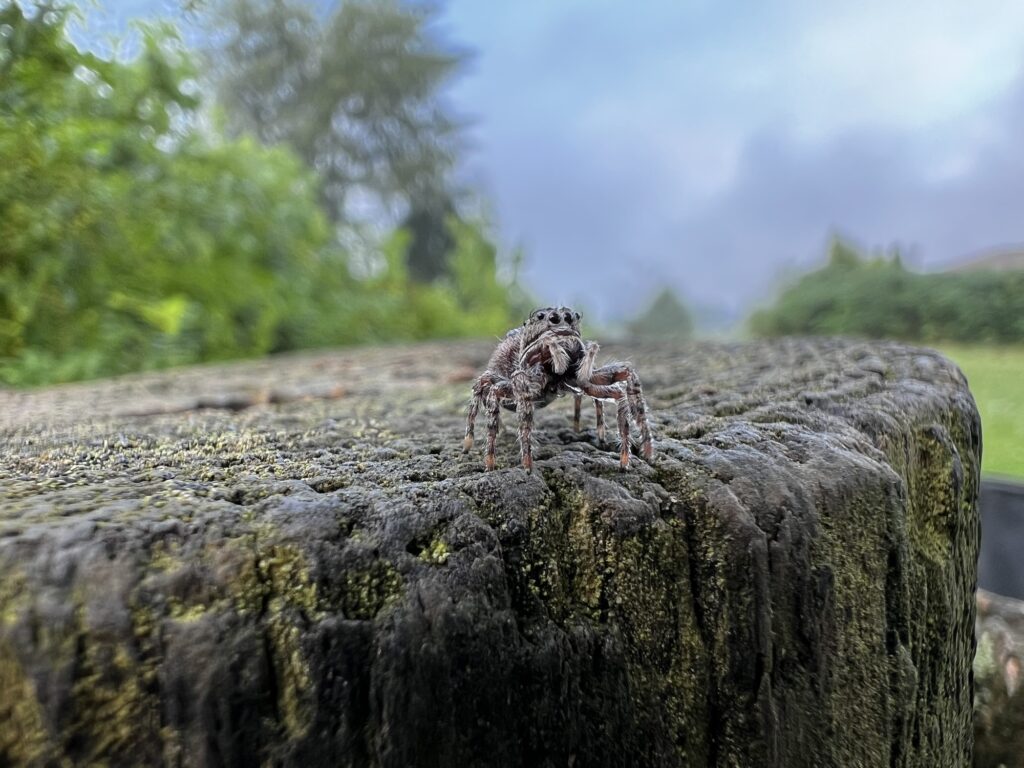
As she gazed at me from her perch on the dry fencepost, I wonder what she made of what she saw: with eight eyes and the ability to see colors that humans can’t, was I radiant? On the other hand, she may have seen what looked like an alien behemoth lurking nearby, and had to keep a watchful (rather than curious) “eye” on me. I hope it was the former rather than the latter, but I guess I’ll never really know.
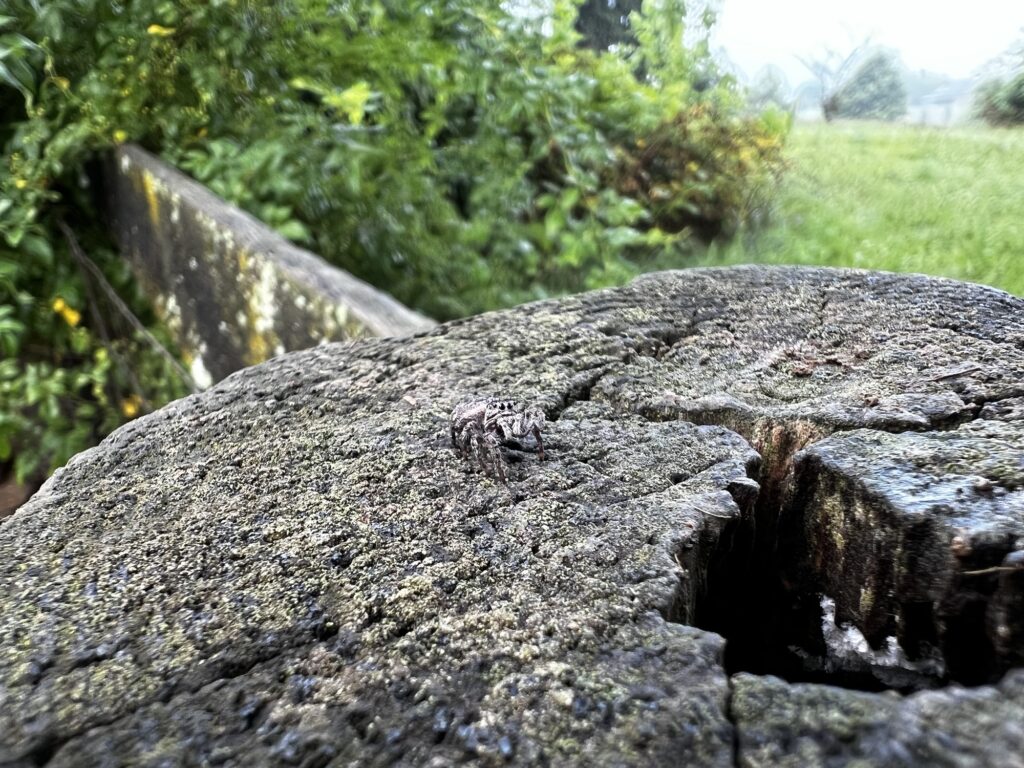
Before this encounter, another jumping spider would visit whenever we went out on the porch to sit in our rocking chairs. He would emerge from whatever crack or crevice he was hiding in, and scoot closer to us. I couldn’t deny the possibility that he was interested in us, perhaps even eavesdropping on our conversation. I named him François (because, well, he looked like a François), and we would see him every time we “porch sat”.
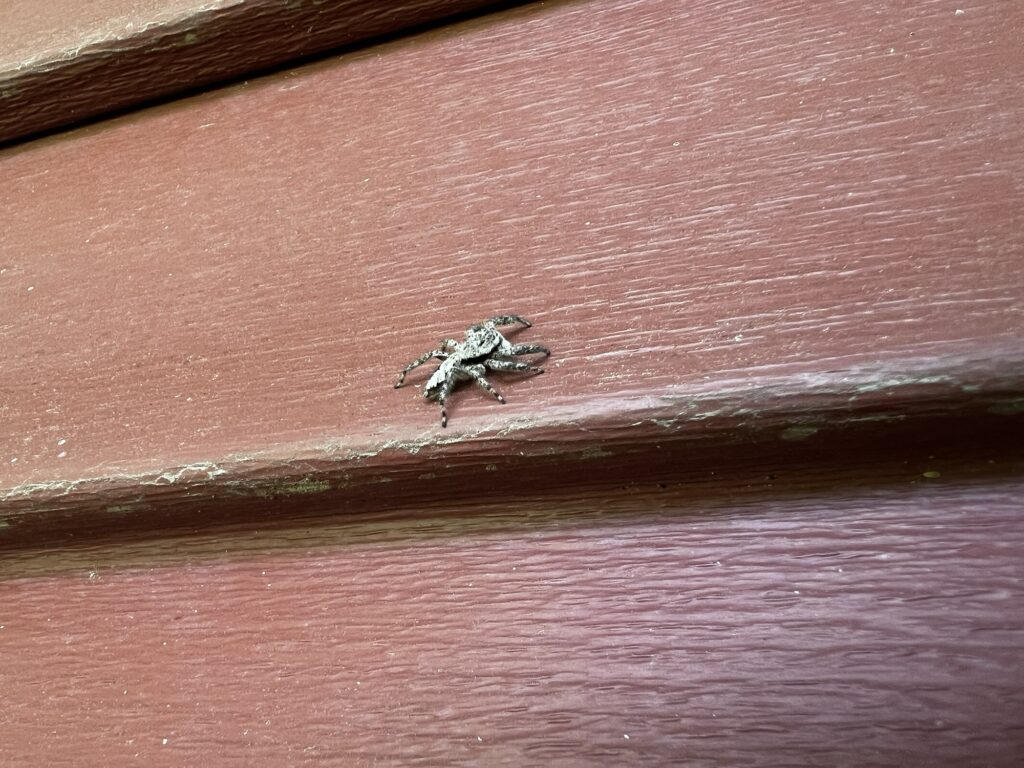
François, like the unlucky spider who fell into the bucket, was a Platycryptus, a common type of jumping spider in our area. I think I saw him the other day, when a Hackberry Emperor butterfly landed a couple of inches away from where François was hidden in the siding. He slowly crept out, getting close to the much-larger butterfly, then apparently decided that the potential prey was unmanageably large and retreated to wait for something more appropriately-sized (like a house fly). I think he made a wise choice.

Another common spider we see here is the Wolf Spider. Female wolf spiders can be quite large – I mean large enough to see one run by from the corner of your eye and wonder if it was a mouse – but they really only seem to be concerned about (1) getting away from you and (2) protecting their egg sacs. Wolf spiders carry their eggs sacs until their brood hatches, then the mother spider carries her spiderlings on her back. I saw one here that made me do a double-take because it looked like she had an oddly “hairy” back, until I saw the tiny legs and realized it was her babies hitching a ride.
The kinds of spiders here are manifold, and each is magnificent and worthy of admiration. We do not intentionally kill spiders – any spiders – and those that don’t belong in the house (because there are some, like cellar spiders, that live in homes) are gently relocated outside. We also try to provide a spider-friendly habitat, not using chemicals like pesticides or herbicides, so that the spiders will have food, too.
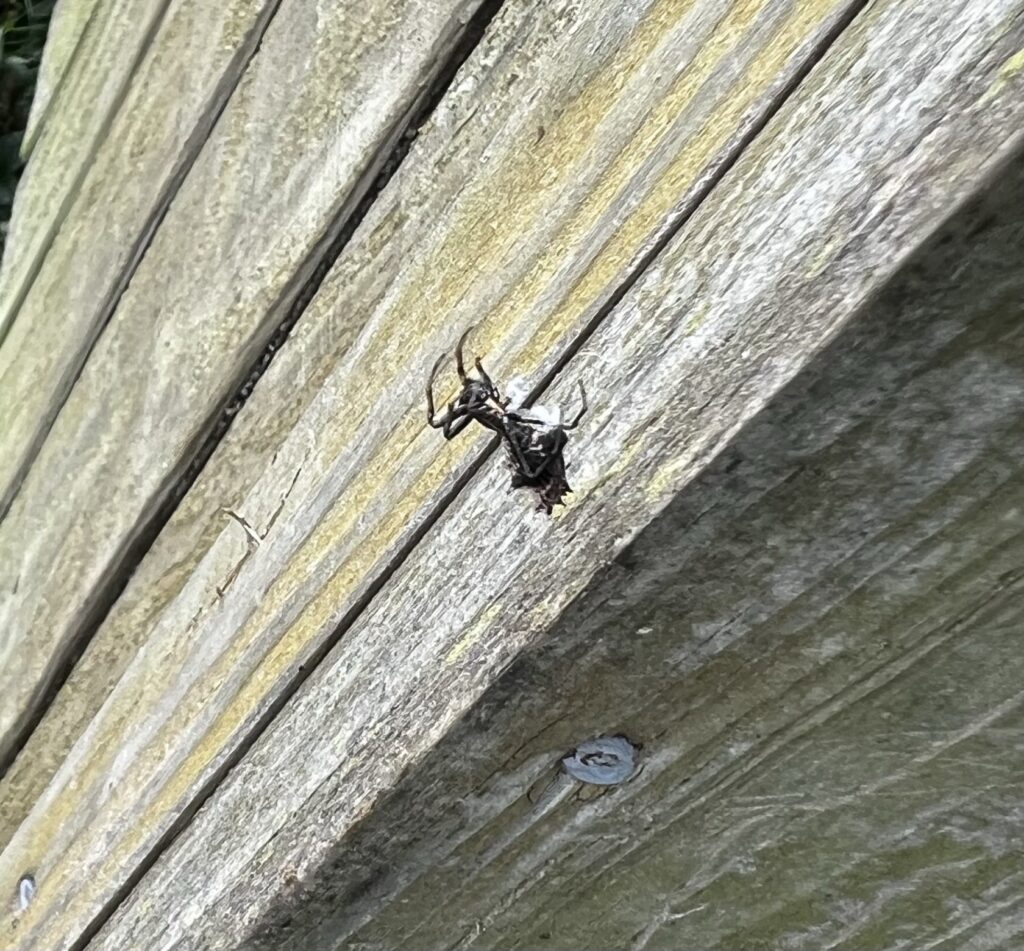
Whether we want to believe it or not, we are all part of the greater ecosystem, and choices that impact our fellow creatures ultimately impact us. Be kind to spiders – they are important, too.
